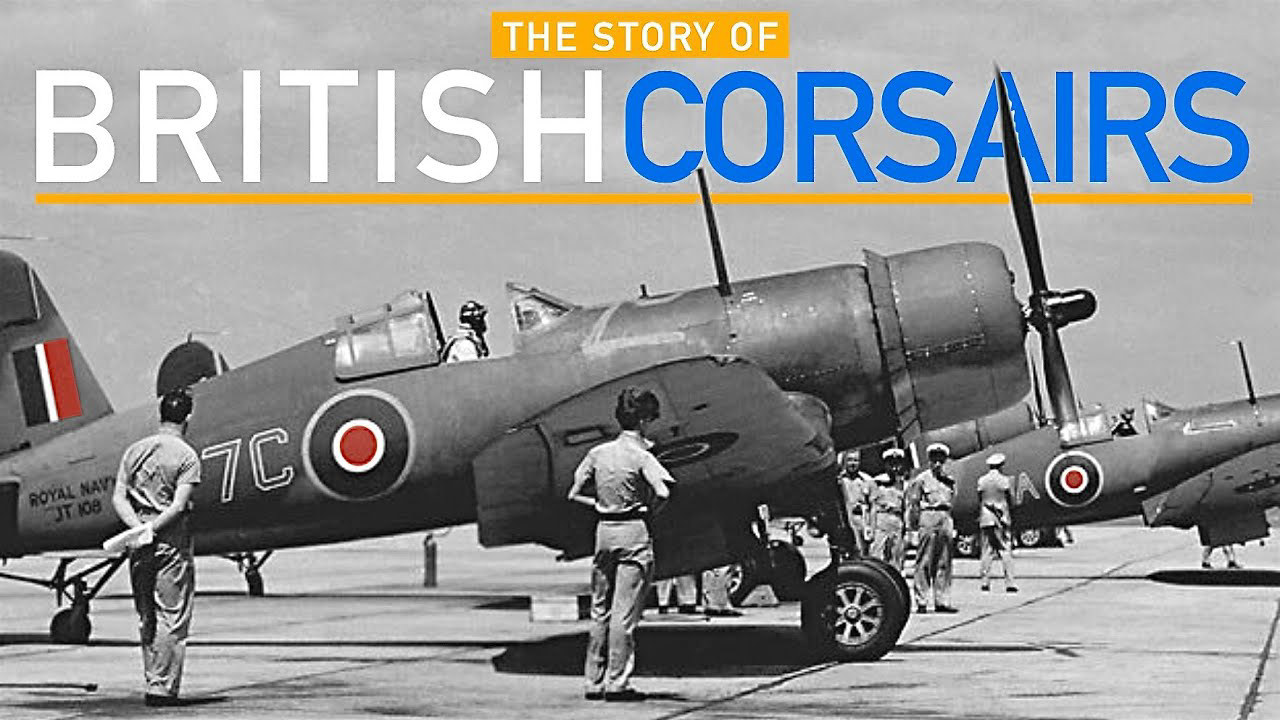A Unique Design Born from Practical Needs
The American F4U Corsair made a striking first impression with its distinctive gull wing design. This unusual look was not just for aesthetics but stemmed from practical requirements. The plane was powered by a massive 18-cylinder Pratt and Whitney radial engine, which drove a four-meter propeller. A conventional straight-wing design would have made it nearly impossible to land on aircraft carriers. The downward kink in the wings allowed for shorter, more robust landing gear, essential for the harsh conditions of carrier operations. However, this design also made the Corsair notoriously difficult to land safely.
Britain’s Fleet Air Arm in Crisis
At the start of World War II, Britain’s Fleet Air Arm faced a severe shortage of modern aircraft. They were forced to rely on outdated planes such as the slow Blackburn Skua and the Fairy Swordfish. Many of these early naval aircraft had designs that dated back to the interwar period, leaving pilots flying machines that were often outmatched in combat. The urgent need for effective fighters led Britain to turn to the United States, initially adopting the Grumman Wildcats and later embracing the powerful but problematic Corsair.
Struggling with a Dangerous Reputation
American naval tests revealed serious issues with the Corsair’s performance on aircraft carriers. The plane had a tendency to bounce violently upon landing, miss the arrestor wires, and even stall unexpectedly, leading to fatal accidents. Because of these dangers, the U.S. Navy initially avoided using the Corsair on carriers, instead assigning it to land-based Marine squadrons. However, Britain needed fighters urgently, which forced them to quickly address the plane’s shortcomings.
British Ingenuity Overcomes Deadly Issues
Necessity led to innovation. The British implemented critical modifications, including adding a valve to the landing gear to prevent bouncing. They also developed a curved landing approach that improved visibility and made deck landings safer. Additionally, clipped wings were introduced to allow easier storage in smaller British hangars, which inadvertently improved the plane’s maneuverability in combat. These changes transformed the Corsair from a dangerous aircraft into a reliable and effective carrier fighter.
From Norway to the Pacific Theater
British Corsairs first saw action in dramatic attacks against the formidable German battleship Tirpitz in Norway. Pilots, including the heroic Canadian Robert Hampton Gray, flew through heavy anti-aircraft fire, proving the plane’s combat worth. However, the true test came in the vast Pacific Theater. The Corsair’s long range and powerful armament made it ideal for extended patrols and intense dogfights against Japanese forces.
Dominance in the Pacific War
Operating from British carriers such as HMS Illustrious, Victorious, and Formidable, Corsairs excelled in their role against Japanese aircraft. They achieved air superiority and supported major operations throughout the war. British Corsair pilots, including ace Leslie Durno, shot down multiple enemy planes, conducted ground strikes, and defended fleets against Kamikaze attacks. Their effectiveness significantly enhanced Britain’s naval airpower, playing a key role in several victories in 1944 and 1945.
Heroism and Sacrifice
Despite their successes, the service of the Corsair was not without loss. Robert Hampton Gray, who distinguished himself in attacking the Tirpitz, made a final sacrifice when he sank a Japanese destroyer but was lost in the attack. His bravery earned him a posthumous Victoria Cross, highlighting the courage and sacrifice of Corsair pilots during the war.
A Sad and Wasteful End
After the war, financial constraints under the Lend-Lease agreement forced Britain to make a tragic decision. They could not afford to keep hundreds of Corsairs or return them to the U.S. With no funds to purchase them outright, over 700 Corsairs, worth millions of dollars, were deliberately sunk off Australia’s east coast. This watery grave marked the end of planes that had once served with distinction.
Legacy of the British Corsairs
The British Corsairs overcame initial rejection and significant flaws, proving their value and bravery in intense combat conditions. Although their end was unfortunate, their legacy in naval aviation history remains secure and respected.







